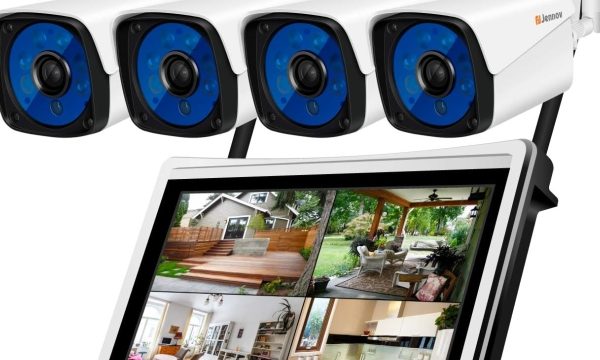
In today’s world, where safety and security are more important than ever, many homeowners are turning to technology for peace of mind. At the forefront of this evolution in home safety is the security camera, a powerful tool that combines advanced technology with a simple goal: to keep your home and loved ones safe. As we navigate through the complexities of modern life, securing our most cherished spaces has never been more critical.
Security cameras have come a long way since their inception, evolving from basic surveillance equipment to sophisticated devices that offer real-time monitoring, remote access, and smart integration. With features like night vision, motion detection, and two-way audio, these cameras serve as vigilant sentinels, watching over your property around the clock. In this article, we will explore the myriad benefits of security cameras, their unique features, and how they can be the unsung heroes in your quest for a secure home.
The Evolution of Security Cameras
The journey of security cameras began in the mid-20th century, with the introduction of closed-circuit television systems. Originally designed for monitoring public spaces, these early models were bulky and required complex wiring. Their primary purpose was to enhance safety in banks, retail stores, and government buildings. As technology progressed, these systems slowly found their way into residential properties, offering homeowners a sense of security that was previously difficult to attain.
In the 1990s, the introduction of digital technology revolutionized the security camera industry. This era saw the emergence of digital video recorders, which allowed for greater storage capacity and convenience. The ability to record high-quality video made security cameras more appealing to homeowners. This evolution also marked the beginning of remote monitoring, giving homeowners the ability to check on their properties from virtually anywhere using a computer or mobile device.
The 21st century brought about a significant shift with the rise of wireless technology and internet connectivity. Modern security cameras are now often equipped with Wi-Fi capabilities, enabling real-time streaming and cloud storage options. The integration of smart technology has further transformed security cameras into comprehensive home security systems, offering features like motion detection, facial recognition, and integration with other smart home devices. This evolution reflects a growing emphasis on accessibility and user-friendliness, making security cameras a vital part of home security today.
Key Features to Consider
When choosing a security camera, resolution is one of the most important features to consider. Higher resolution cameras provide clearer images, allowing you to identify faces and details in various lighting conditions. Common resolutions include 1080p, which offers full HD quality, and 4MP or higher for even greater clarity. For outdoor settings or larger areas, opting for a camera with optimal resolution ensures you don’t miss critical details that could enhance your security.
Another essential feature to look for is night vision capability. Since home security often involves monitoring during low-light conditions, having a camera equipped with infrared or color night vision is crucial. This allows the camera to capture clear footage during the night or in dimly lit areas, providing round-the-clock surveillance. Additionally, consider the distance the night vision can cover, as this will determine how effectively it can monitor your property after dark.
Security Camera Repairs
Connectivity options also play a significant role in the functionality of a security camera. Cameras that offer Wi-Fi connectivity allow for easy remote access, enabling you to view live feeds and recorded footage from your smartphone or computer. Some models may also support cloud storage, ensuring your footage is safely stored and easily accessible. Moreover, check for compatibility with smart home systems, as this can enhance your overall home security setup and provide additional automation features.
The Future of Home Surveillance
As technology continues to evolve, the future of home surveillance looks increasingly sophisticated. Innovations in artificial intelligence and machine learning are paving the way for security cameras that not only capture footage but also analyze it in real time. This means that security systems will be able to recognize familiar faces, detect unusual behavior, and even send alerts if something seems amiss. The risk of false alarms will likely decrease, allowing homeowners to have more confidence in their security measures.
Another significant development is the integration of smart home technology with security cameras. Homeowners will be able to control their surveillance systems seamlessly through smartphone apps, voice commands, or automated routines. This connectivity will enable users to monitor their properties from anywhere in the world, receive instant notifications, and even interact with visitors through two-way audio features. The convenience of remote access will make security cameras an essential component of modern home automation.
Privacy concerns will also play a crucial role in shaping the future of home surveillance. As security cameras become more prevalent, manufacturers will need to address issues related to data storage, encryption, and user control over personal information. Striking a balance between enhanced security and individuals’ right to privacy will be essential. Expect to see advancements in privacy-focused features, such as customizable privacy zones and user-triggered data deletion, ensuring that while homes are watched over, personal privacy remains protected.

